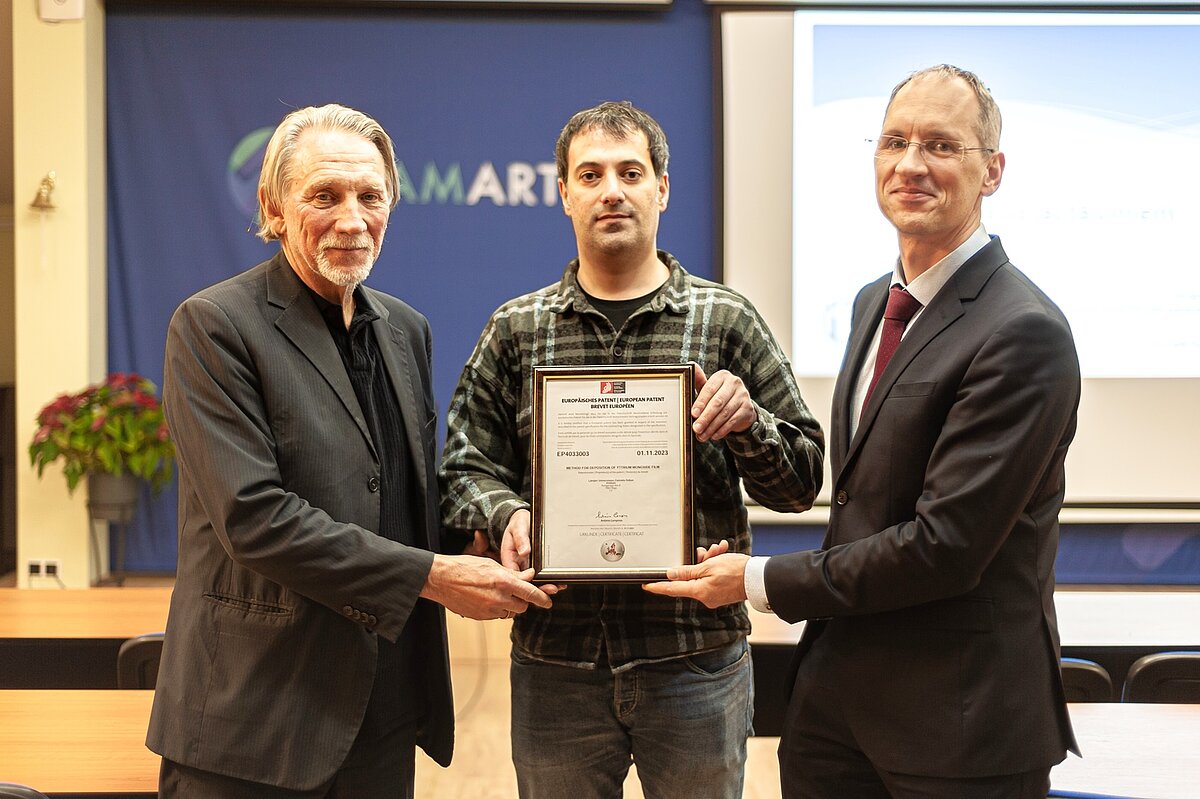
At the end of November, the Institute of Solid State Physics, University of Latvia (LU CFI) received a document certifying a patent, which was obtained thanks to the invention of Halil Arslan, Scientific Assistant at the Institute's Thin Films Laboratory. The invention relates to nanocoatings, more particularly, to nanocoatings deposited by plasma vacuum technologies and having semi-conducting properties.
The proposed method for deposition of yttrium monoxide film on a substrate by reactive magnetron sputtering, comprising the following steps:
- positioning a substrate in a vacuum chamber having a magnetron and yttrium source for sputtered particles and a process gas shroud means for partially enveloping the magnetron, the substrate having a surface facing the source;
- operating the magnetron to sputter yttrium particles from the yttrium source for coating the substrate surface, including introducing a process gas to the shroud means;
- withdrawing and depleting gas from the vacuum chamber and creating process pressure between 1×10-3 and 5×10-3 Torr with 1.40×10-8 - 1.74×10-5 Torr oxygen partial pressure by inletting the process gases and continuing sputtering yttrium particles from the yttrium source; as soon as the desired thickness of coating on the substrate surface is reached, disactivating the magnetron.
More information about the patent
On November 30, 2023, the seminar "Patenting of inventions: A comprehensive guide for scientists" was held at the ISSP UL, which was led by Jevgenijs Fortūna, a partner of the Patent Law Office "FORAL", a professional European and Latvian patent attorney.
During the event, scientists of ISSP UL had the opportunity to get a detailed overview of the patenting process and its importance in the protection and commercialization of innovations; to learn more information about the requirements, criteria and strategies for patenting inventions, as well as to optimize the protection of their inventions; as well as to find out the answers to other questions related to the patenting of inventions and copyright.